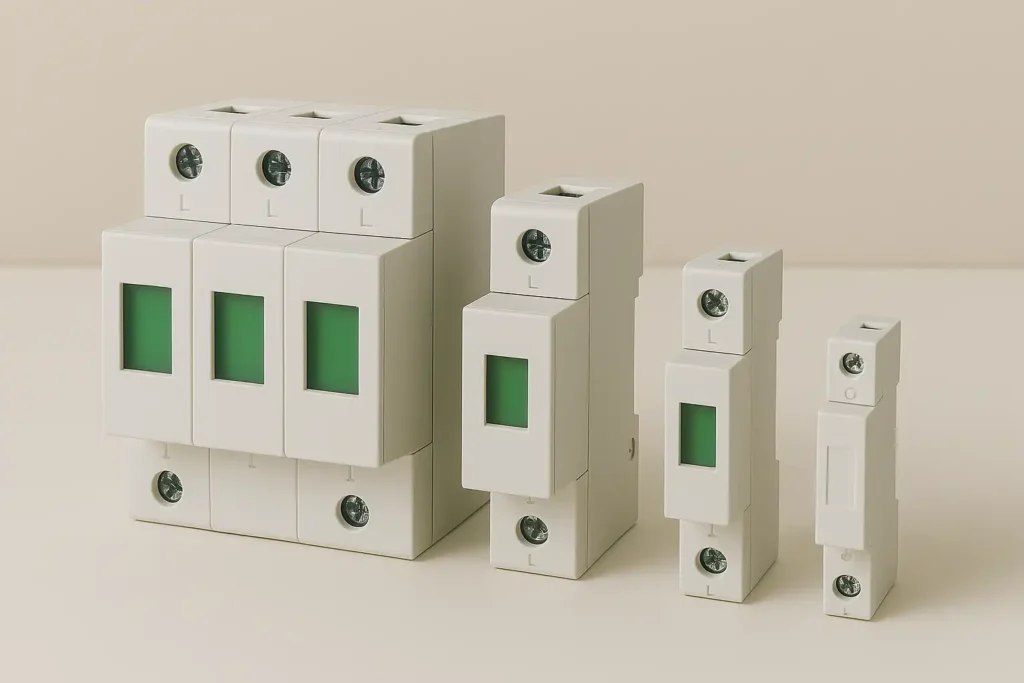Surge protector, also known as lightning arrester, is an electronic device that provides safety protection for various electronic devices, instruments, and communication lines. When surge currents or voltages suddenly occur in electrical circuits or communication lines due to external interference, surge protectors can conduct shunting in a very short time, thereby avoiding damage to other devices in the circuit caused by surges.
Meaning of Surge Protector Parameters
The following is an analysis of the meanings of various parameters of surge protectors.
1. Maximum discharge current Imax: The peak value of the maximum surge current that the surge protector can withstand when subjected to a standard lightning wave impulse with a waveform of 8/20 μ s once.
2. Rated discharge current Isn: The maximum peak surge current that the surge protector can withstand when subjected to 10 standard lightning wave impacts with a waveform of 8/20 μ s.
3. Nominal voltage Un: The rated voltage of the protected system matches, and in information technology systems, this parameter indicates the type of protector that should be selected, indicating the effective value of AC or DC voltage.
4. Voltage protection level Up: The maximum value of the surge protector in the following tests: 1KV/μ s slope flashover voltage; Residual voltage of rated discharge current.
5. Rated voltage Uc: The maximum effective voltage that can be applied to the designated end of the surge protector for a long time without causing changes in the characteristics of the protector and activating the protective components.
6. Data transmission rate Vs: represents how many bit values are transmitted in one second, unit: bps; It is a reference value for correctly selecting surge protectors in data transmission systems, and the data transmission rate of surge protectors depends on the transmission method of the system.
7. Maximum longitudinal discharge current: refers to the maximum peak surge current that the surge protector can withstand when a standard lightning wave with a waveform of 8/20 μ s is applied to the ground once per line.
8. Leakage current: refers to the direct current flowing through a surge protector at a nominal voltage Un of 75 or 80.
9. Maximum lateral discharge current: refers to the peak value of the maximum surge current that the surge protector can withstand when a standard lightning wave with a waveform of 8/20 μ s is applied between lines once.
10. Peak discharge current: divided into two types: rated discharge current Isn and maximum discharge current Imax.
11. Response time tA: It mainly reflects the sensitivity and breakdown time of the special protective components in the surge protector, and changes within a certain period of time depending on the slope of du/dt or di/dt.
12. Online impedance: refers to the sum of the loop impedance and inductive impedance flowing through the surge protector at the nominal voltage Un. Usually referred to as “system impedance”.
13. Return loss Ar: represents the proportion of the front wave reflected by the protective equipment (reflection point), and is a parameter that directly measures whether the protective equipment is compatible with the system impedance.
14. Insertion loss Ae: The ratio of voltage before and after insertion of a surge protector at a given frequency.
Read the following article for more information:
How to Test Surge Protection Devices for Optimal Performance
How to Replace a Surge Protector Safely and Efficiently
What You Need to Know About Surge Protection Device Lifespan



